Cadiz, Spain
Cadiz, a long history, part of the Roman Empire, an important place for Mediterranean trade and exploring the Atlantic. Learn and see more about Cadiz and Spain on a small group educational tour for senior couples and mature solo travellers touring Europe.
14 Oct 21 · 8 mins read
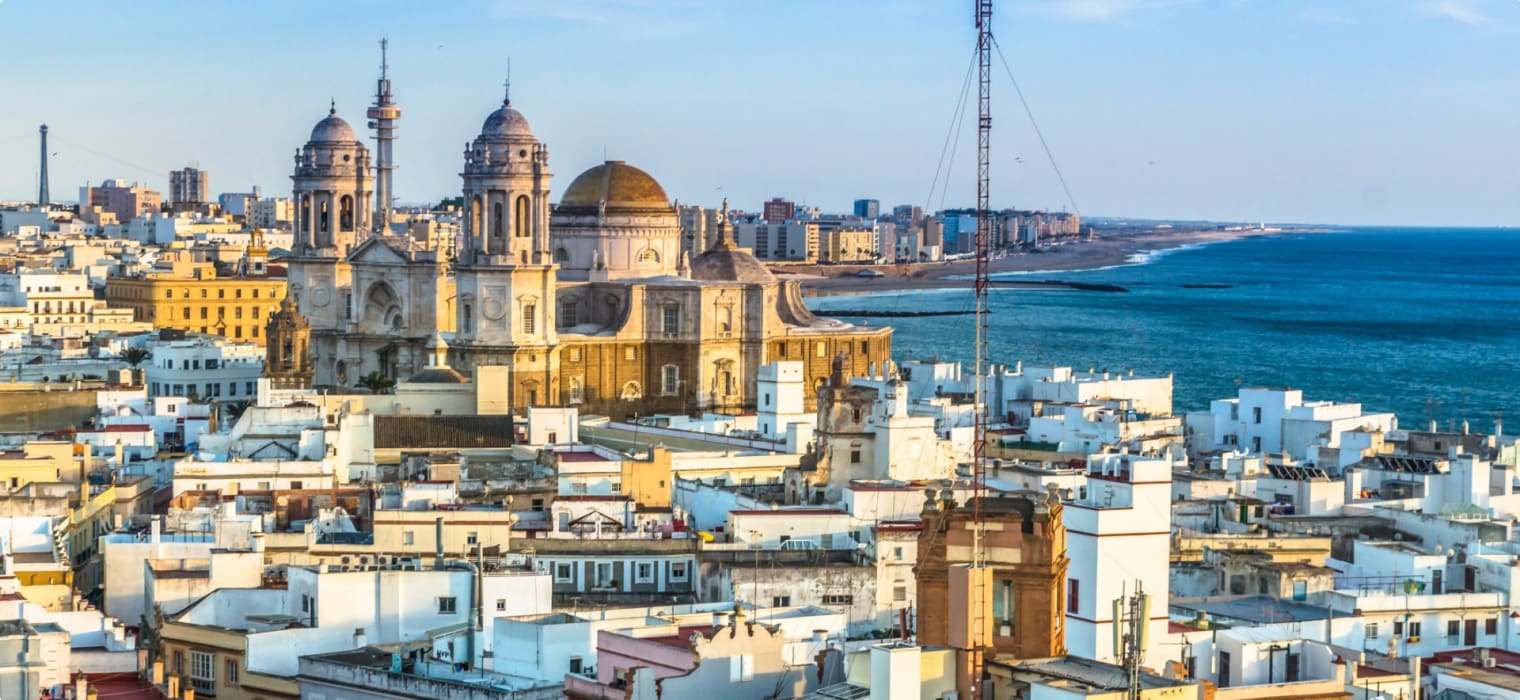
The History of Cadiz Spain
Cadiz city, on the western coast of southern Spain, is one of the oldest continuously inhabited cities in Western Europe. Its archaeological remains date back to the 8th century BC, around the time it was founded as a Phoenician outpost. Since then, it has played an important role as a sea port for trade and exploration and a strategic naval base amongst a host of cultures and civilisations, including the Carthaginians, Romans, Visigoths, Moors, and Spanish to name a few. Situated on a long, narrow peninsular extending into the Gulf of Cadiz, it has long provided access to the Atlantic Ocean and beyond.
Today its rich three-thousand-year history is laid out for visitors to explore. The Plaza de Catedral (home to the cathedral and the Baroque Church of Santiago), the quaint old town, Santa Catalina and San Sebastian castle, Plaza de Sevilla, Plaza de Espana, and the city‘s beautiful beaches (particularly La Caleta Beach) all make Cadiz a perfect holiday destination! Plus the ideal towns of Jerez de la Frontera, Tarifa, Vejer de la Frontera, El Puerto de Santa Maria, and more are all located in Cadiz Province, just a stone’s throw away,
Odyssey Traveller conducts a guided tour of Cadiz during our 24-day guided small group tour of Spain and Portugal. During this tour, we conduct a day trip to the Spanish city to take in its beautiful and historic sights before continuing on to Seville. The tour is designed for senior and mature travellers who would like to learn about history and culture with like-minded people in a small group setting (participant number is typically 6 to 12), using the knowledge and expertise of our tour leader and local guides.
Read on for more information on the history of Cadiz to assist your tour!
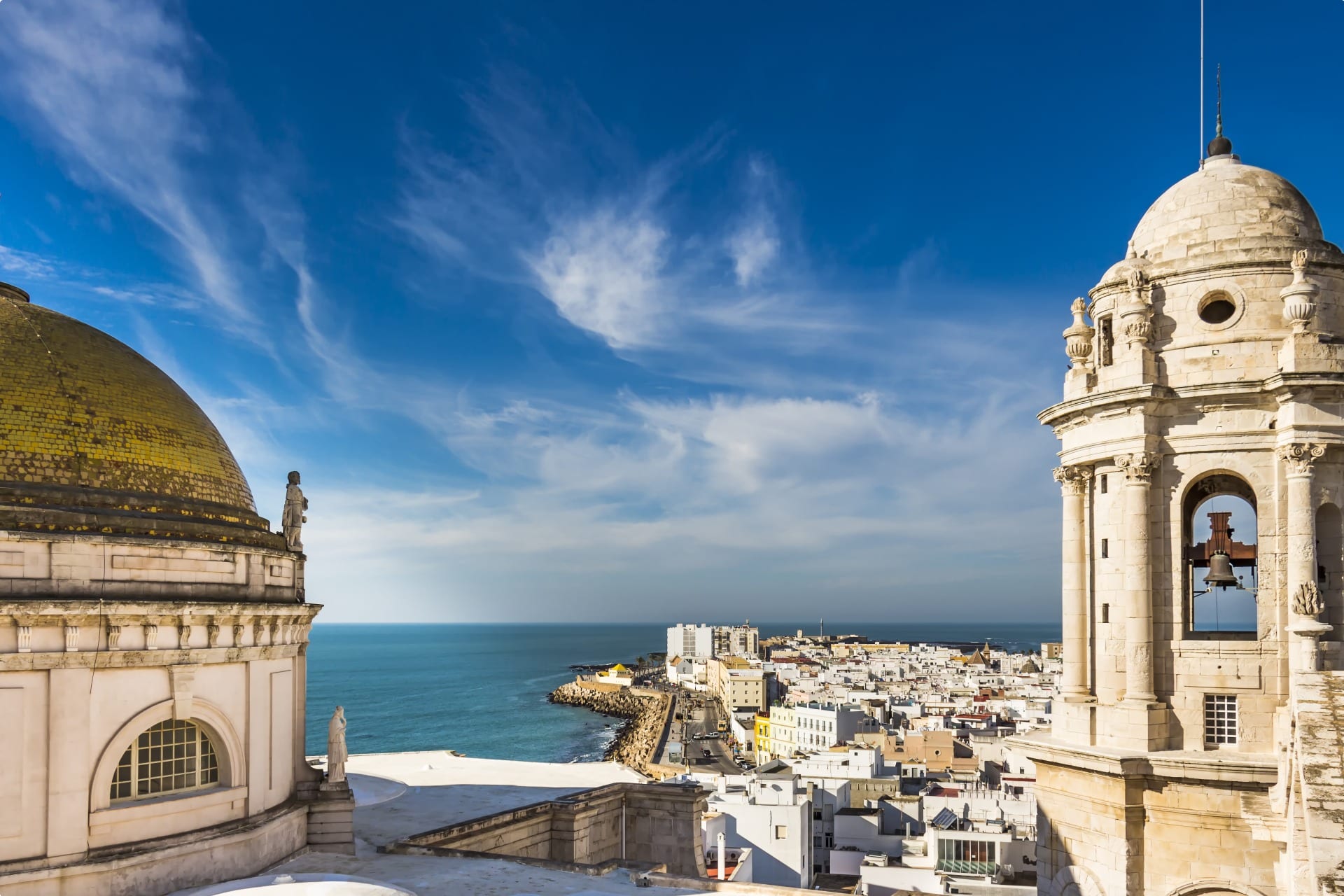
Phoenicians & Carthaginians
Cadiz is among the oldest cities on Europe’s Atlantic coast. Legend attributes its foundation to 1104 BCE, although this is improbable, with a birthdate sometime in the ninth century BCE more accepted amongst historians.
It was founded as Gadir by Phoenicians from Type (modern day Lebanon) as the westernmost Phoenician outpost, used to launch expeditions to southwest Britain and northwest Africa and to broaden trade routes. The Phoenicians were attracted to the area by sources of tin in Iberia and in further reaches of the Atlantic, as well as the silver-rich realm of Tartessos in the southern Iberian hinterland. The city flourished in the years up to about 550 BCE, growing to be the capital of the Phoenician trade network, with goods filtering through from as far as Cyprus and Phoenicia itself.

After that, pressure in the East from Persians and Assyrians damaged the trade of the Phoenicians within and beyond the Mediterranean. This then helped the Carthaginians to conquer the weakened city in 500 BCE, picking up the pieces and creating their own flourishing trade network.
Sometime later in about 238 BCE, still under Carthaginian rule, the general Hamilcar Barca used the city as a naval base of operations in his quest to the subjugate the Iberian tribes. Then, during the Second Punic War (218-202 BCE), the Carthaginian general Hannibal departed from Cadiz, marching his armies on his famous journey across the Pyrenees and the Alps to attack the Romans in Italy.
Romans, Visigoths & The Moors
The Romans themselves invaded the Iberian Peninsula in 206 BCE in the later stages of the Second Punic War under the general Scopio Africanus, crushing the resistance of the native Iberians and Carthaginians. By 200 BCE Cadiz had willingly surrendered to the Romans, who took over the site, naming it Gades. Julius Caesar then bestowed Roman citizenship on all its inhabitants in 49 BCE.
Cadiz prospered during the Roman times as a port and naval base, even growing to be the second most populous city in the Empire for a short period. During this time, it was home to more than 500 equites (members of the wealthy upper class), rivalling Padua and Rome itself.
The Roman settlement was famous for its monopoly on the salted fish trade as well as the skill of its dancing women. The type of dance appears to have been something of a cross between modern Middle Eastern belly dancing and Andalusian flamenco. It was highly erotic and a hypnotic effect on the audience.
Several amphitheatres and aqueducts were built during this period. The ruins of one such Roman theatre, built by one of Julius Caesar’s lieutenants in the first century BCE and discovered in the 1980s, is one of the oldest, largest, and best-preserved in the world.

As Roman power began to decline in the third century CE, Gades too entered a period of significant decline, losing its role as an important commercial and strategic base. Much of the original city was then completely destroyed as the Visigoths overthrew Roman power in Hispania Baetica in the 400s.
The Middle Ages
The city was conquered by numerous powers during the Middle Ages. At first the Byzantines conquered the site in 551 as part of the province of Spania. It then fell back to the Visigoths in 572 following Leovigild’s conquest, before the invading Moorish troops of Tariq Ibn Ziyad took over in 711 after the Battle of Guadalete. During this period, the big open city slowly gave way to a small walled city, which was a common style in the Middle Ages.
Under Moorish rule, the city was renamed Jazīrat Qādis, whence the modern Spanish name was derived. It was not a prominent city under the Moors, however, and was almost deserted when King Alfonso X of Castile claimed it in 1262.
Alfonso X subsequently implemented a number of measures that repopulated the city and led to a resurgence. This included the concession of the title of city, and the establishment of an episcopal headquarters and monopoly of trade with Africa. Doing so ensured ties to Genoa and positioned Cadiz as a key point in European trade.
Age of Prosperity
Under the Spanish crown, Cadiz entered a renewed age of prosperity as a port city, especially from the time of the Spanish voyages to America. This is where Christopher Columbus set sail on his second and fourth voyages to the Americas at the turn of the 16th century, and shortly after the city became home of the Spanish treasure fleet. The Spanish conquistadores also departed from here later during the colonial times. In turn, it soon became the richest port in Europe, with a great wealth of silver flowing in from Mexico and Peru.
Consequently, the city became a major target of Spain’s enemies. During the 16th century it successful ripped a series of raids by Barbary pirates, but a raid by the Englishmen Sir Francis Drake managed to occupy the harbour for three days, capturing six ships of the Spanish fleet and destroying 31 others. The city was then again sacked by the British in 1596, but it was rebuilt, fortified, and was able to repel subsequent attacks in 1626, 1656, and 1702.
It was from this point, during the 18th century, that Cadiz entered into a golden age of economic growth. In 1720, the city acquired monopoly rights over American trade with Spain, linking itself both culturally and politically with the new world and once again becoming extremely wealthy. It soon became one of Spain’s greatest and most cosmopolitan cities and home to trading communities from many countries.
Today this past is still visible in its colonial town architecture of long and narrow streets, sunny squares, and majestic gardens. Many of the today’s historic buildings in the Old City also date from this era.

The 19th Century
During the Peninsular War (1808-14), in which England fought Napoleon’s efforts to control the Iberian Peninsula, Cadiz was one of the few Spanish cities to resist the invading French. During the war it served as the capital of all of Spain not under the control of Napoleon, host to Spain’s military high command and Cortes (parliament). Here, in the Church of San Felipe Neri, the first Spanish constitution was signed in 1812.
King Ferdinand VI rejected the constitution when he was restored to the throne in 1814. The citizens of the town then revolted in 1820 to re-establish the constitution and the revolution spread successfully until Ferdinand VI was imprisoned in Cadiz in 1823. At this point, the French came to the king’s aid and secured his release in the Battle of Trocadero. With this, Ferdinand VI returned to the throne, resuming his absolute rule and suppressing liberalism for some time.
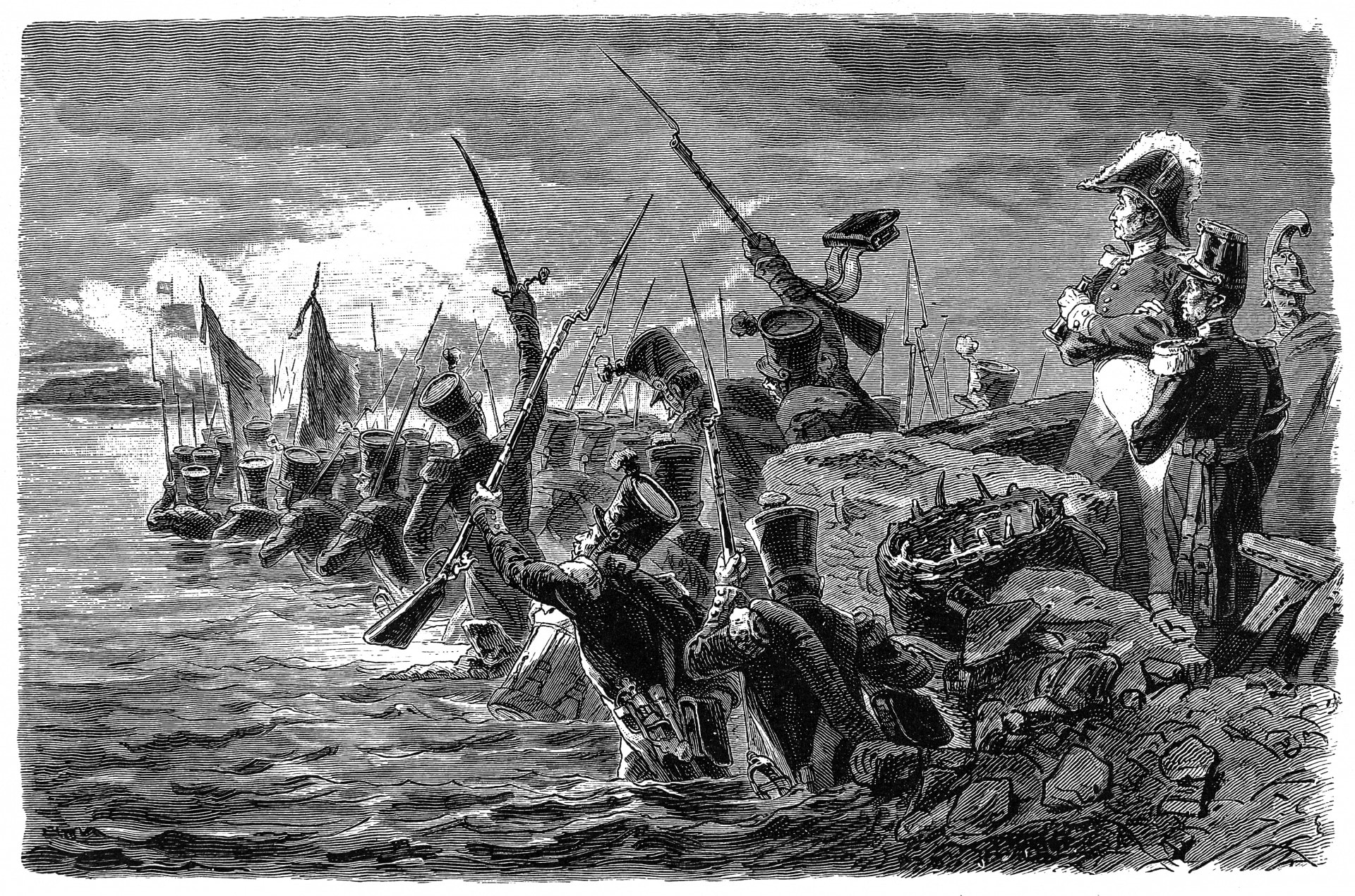
Nevertheless, Cadiz remained a centre of liberal and even radical politics. It was once again the seat of a revolution in 1868, which successfully overthrew and ousted Queen Isabella II. But this revolution was short lived, with the Cortes of Cadiz reinstating the monarchy under King Amadeo just two years later. Radical ferment then rose again in 1883, with 14 anarchists executed in the city, having been accused of plotting to massacre the upper classes of Andalusia.
With the loss of Spain’s colonies in the Americas, the kingdom experienced a massive blow to its trade from which Cadiz never recovered. The city experienced a decline in relevance in national affairs, which was later accelerated by the disasters of the Spanish American War (1898).
Modern History
Cadiz played an important role during the Spanish Civil War (1936-39) as a support for the Nationalists and port of entry for reinforcements from Spanish Morocco. In 1947 the city was badly damaged from an explosion of a gunpowder magazine in the naval dockyards. The explosion was heard at least up to a distance of 120km and 150 people officially died.
Today the Spain‘s oldest city still stands as one of the most beautiful in the West. Key sights include Phoenician and Roman archaeological sites, mansions, palaces, grand plazas, the old town, its cathedral, La Caleta Beach, and typical barrios such as La Viña or Santa Maria.
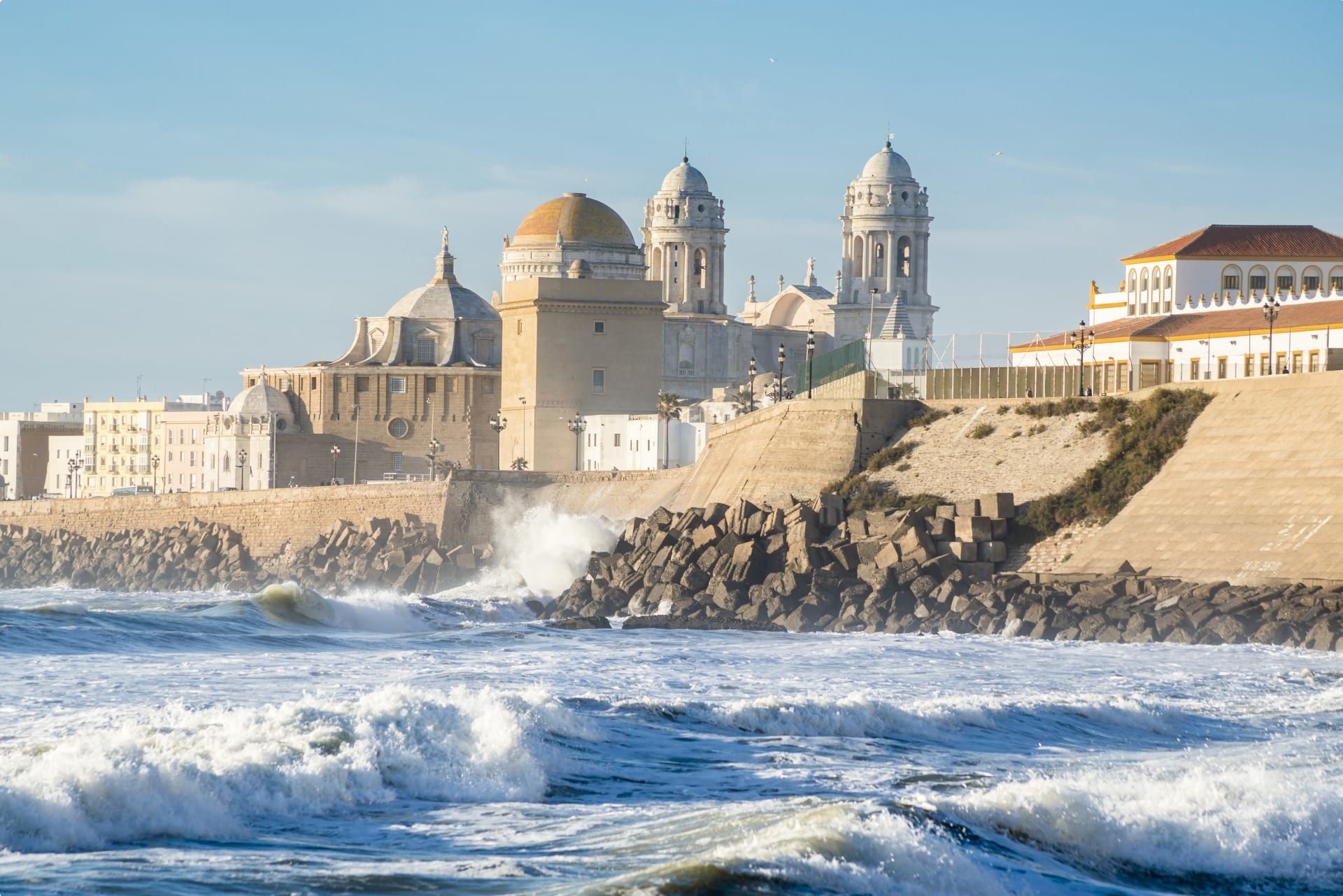
Tour of Cadiz
Odyssey Traveller conducts a day trip city tour to Cadiz as part of our 24-day guided tour of Spain and Portugal, designed for the senior traveller, and led by experienced, and enthusiastic like minded people.
During this small group tour, we explore Spain and Portugal fairy-tale natural beauty, its ancient Roman heritage, its World Heritage Sites, and world-famous cities, all with some truly spectacular scenery along the way. Although divided by history and language, these close neighbours once possessed mighty empires bringing them great wealth which they then used to create many of the monuments we admire today.
The Iberian Peninsula is renowned for the spectacular views of its scenery, its red wines of rioja, and exotic food. Our Spain and Portugal tour explores the Iberian peninsula ‘s intricate history and incredible art and architecture as we stroll and wander through its streets. Your experienced tour director leads the way assisted by local a tour guide for guided sightseeing in key places such as Madrid, Barcelona, Seville, Bilbao, Segovia, Braga and Lisbon ensuring you have a great trip.
Odyssey Traveller has been serving global travellers since 1983 with educational tours of the history, culture, and architecture of our destinations designed for mature and senior travellers. We specialise in offering small group tours partnering with a local tour guide at each destination to provide a relaxed and comfortable pace and atmosphere that sets us apart from larger tour groups. Tours consist of small groups of between 6 and 12 people and are cost inclusive of all entrances, tipping and majority of meals. For more information, click here, and head to this page to make a booking.
Articles about Spain published by Odyssey Traveller:
The following list of articles published by Odyssey Traveller for mature aged and senior travellers to maximise their knowledge and enjoyment of Spain when visiting;
- Questions About Spain
- 15 of the best places in Spain to visit.
- Travel notes for Barcelona
- Ten of the best books published on Spain
- Ten of the Best art galleries in Europe to visit.
- Discovering Spain (and Portugal )
External articles to assist you on your visit to Spain:
Related Tours
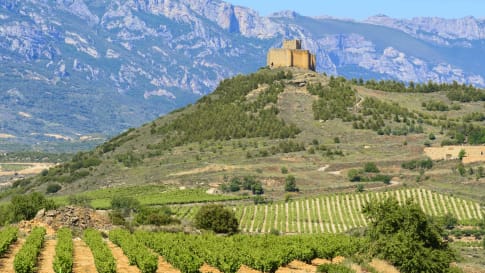
24 days
Apr, Oct, MarSmall Group Guided Tours of Spain and Portugal
Visiting Portugal, Spain
Our program explores the lands of Spain and Portugal, two countries bound by many centuries of history reflected in their modern cultures. Divided by history and language, contiguous neighbours Spain and Portugal were once host to gigantic empires that still bear their languages and lifestyles. A small group tour for couple and solo travellers.
From A$16,225 AUD
View Tour
21 days
Sep, MayDiscover Spain
Visiting Spain
Join this small group travel, 21-day tour of Spain. For couples or solo traveler with minimal single supplement has daily itineraries with local guides that provide authentic experiences for those who seek small group journeys. Escorted tour begins in Madrid, finishes in Barcelona.
From A$14,750 AUD
View Tour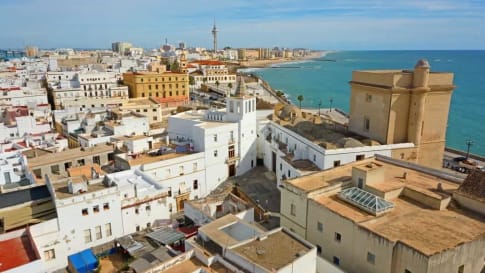
21 days
May, Aug, SepHabsburg Spain vs Tudor England: small group tour exploring 16th century history of England & Spain
Visiting England
This holiday with a leading tour operator allows the escorted tour for seniors to explore the life and times of the royal families responsible for making England and Spain so significant in the 16th century with local guides providing the travel experience for the detailed itineraries. We spend 10 days travelling from London to Madrid.
From A$14,295 AUD
View Tour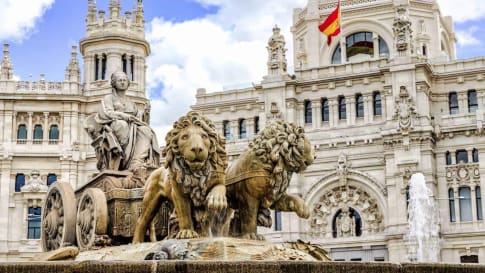
11 days
Sep, Apr, AugShort Spain Tour for senior and mature travellers
Visiting Spain
Join our small group guided tour of Spain, exploring this fascinating country over 10 nights with like minded people. We start in Barcelona and make our way slowly towards Madrid. Enjoy the food and culture while learning about the history of each location from our expert local guides and Odyssey Program Leader.
From A$7,610 AUD
View TourRelated Articles
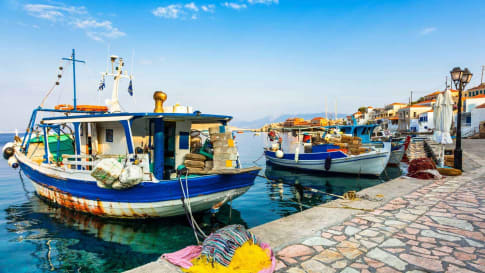
Empires Crossing the Mediterranean: 1130-1300
As a sea connecting continents and stretching from the Atlantic Ocean in the west to Asia in the east, the Mediterranean has for centuries been a centre of trade and exploration.

The Phoenicians and Purple Dye
Article supporting tours to Morocco, Tunisia, Spain, Sicily and Crete. The Phoenicians where one of the empires controlling the Mediterranean sea from the 11th to 13th century. This article is for small group educational tours for senior couple and mature solo travellers joining a program.

The Sagrada Familia, Spain
La Sagrada Familia The Sagrada Familia, still under construction A small group guided tour of La Sagrada Familia, perhaps one of the world’s most iconic buildings, including the Basilicai Temple Expiatori de la Sagrada Familia…
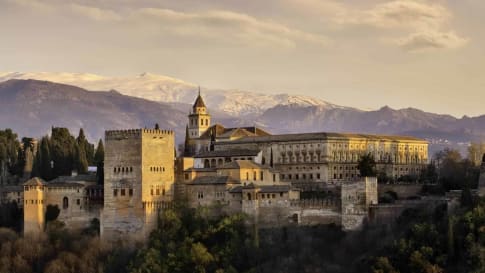
Granada, Spain
Located at the foot of the Sierra Nevada mountains in Spain’s southernmost region of Andalucia, Granada was the last stronghold of the Spanish Moors and the brilliance of Moorish spirit and culture endures in the city today. The Alhambra, the palace fortress of the Nasrid sultans, is the heart and soul of Granada and one of Spain’s most popular tourist attractions. With its magnificent palaces and gardens, the Alhambra is an unmissable sight but the city itself also has a lot on offer including buzzing cafes and restaurants, vibrant tapas bars, a bustling Jewish quarter and funky street art.


